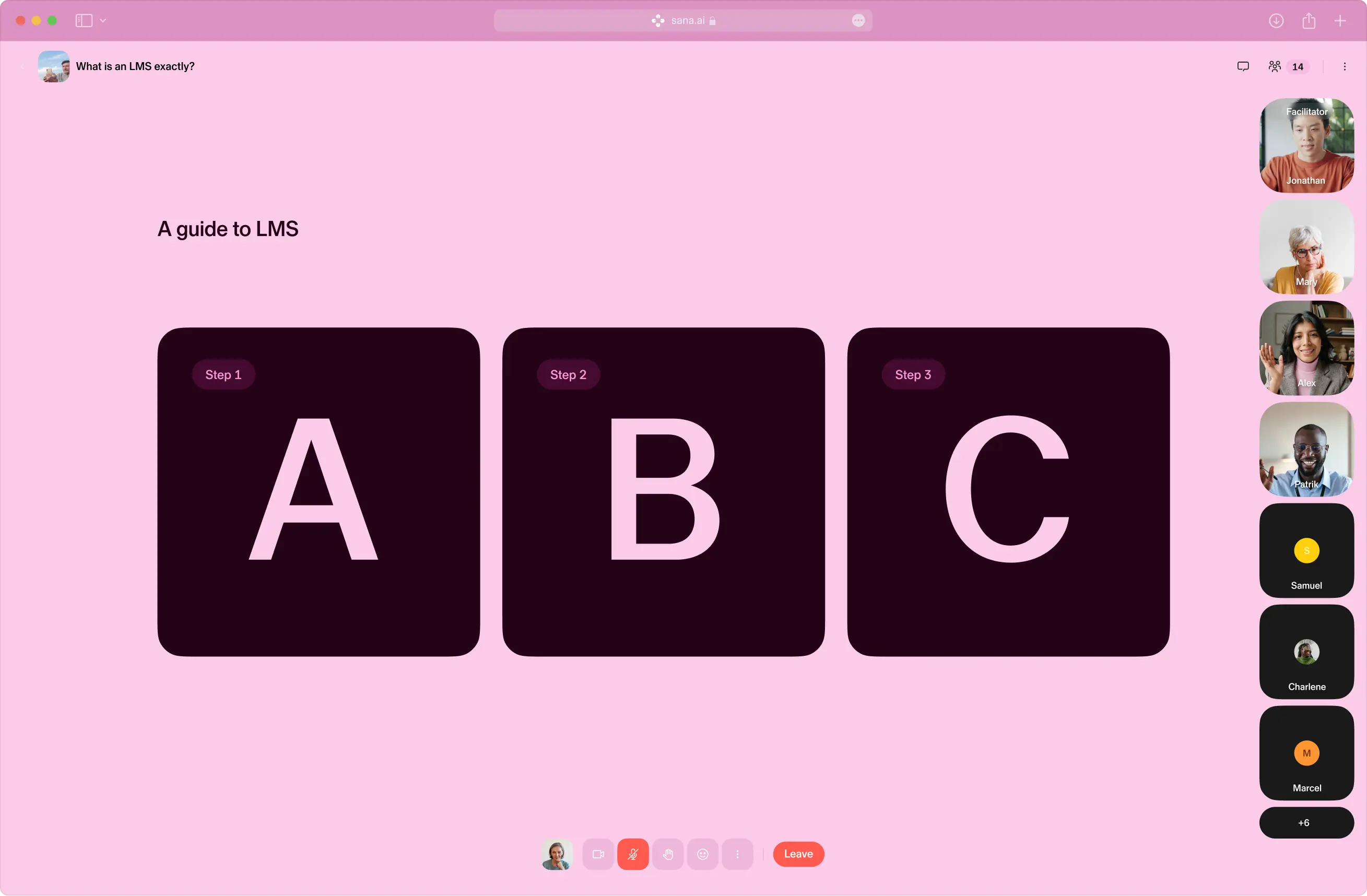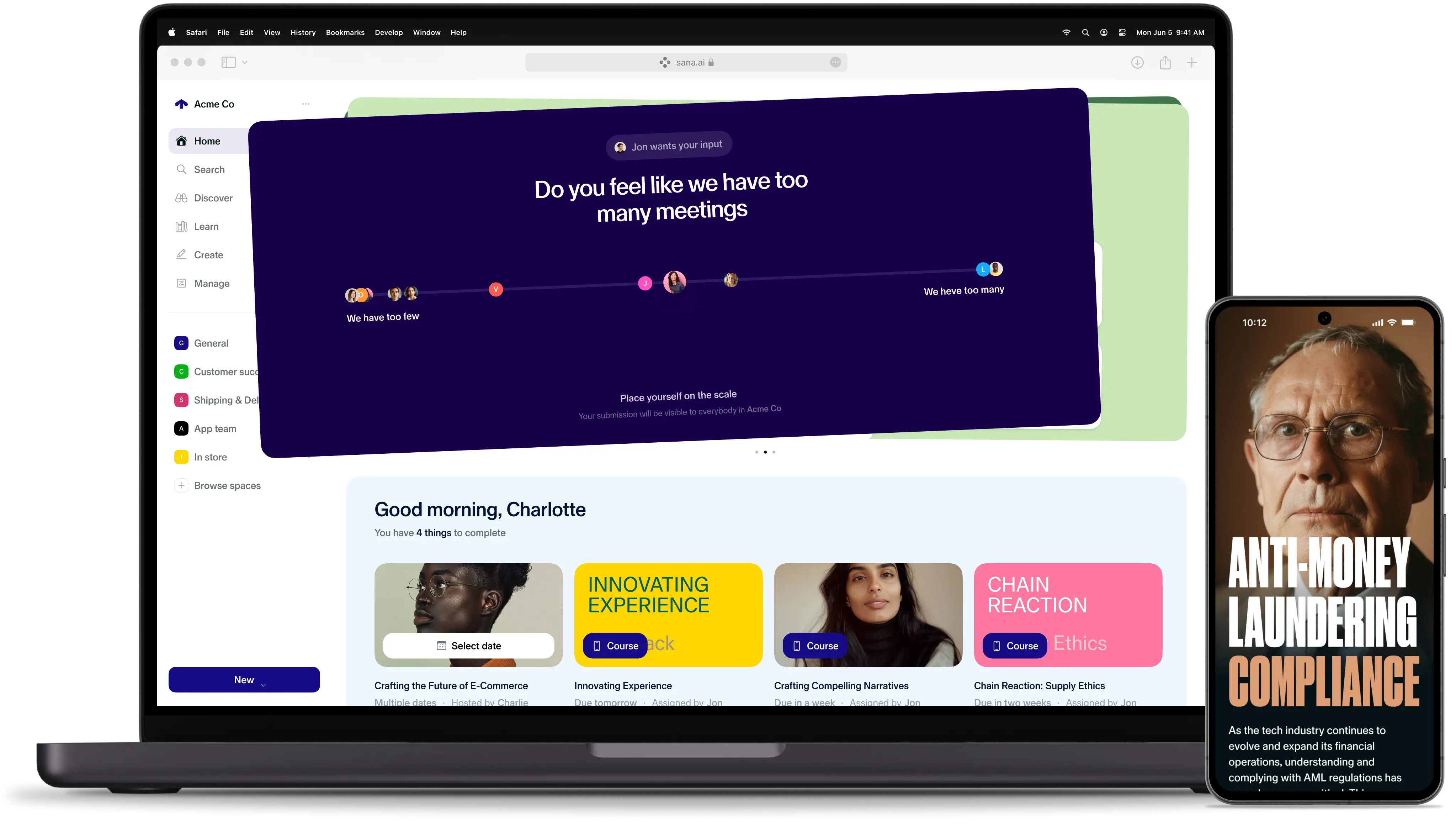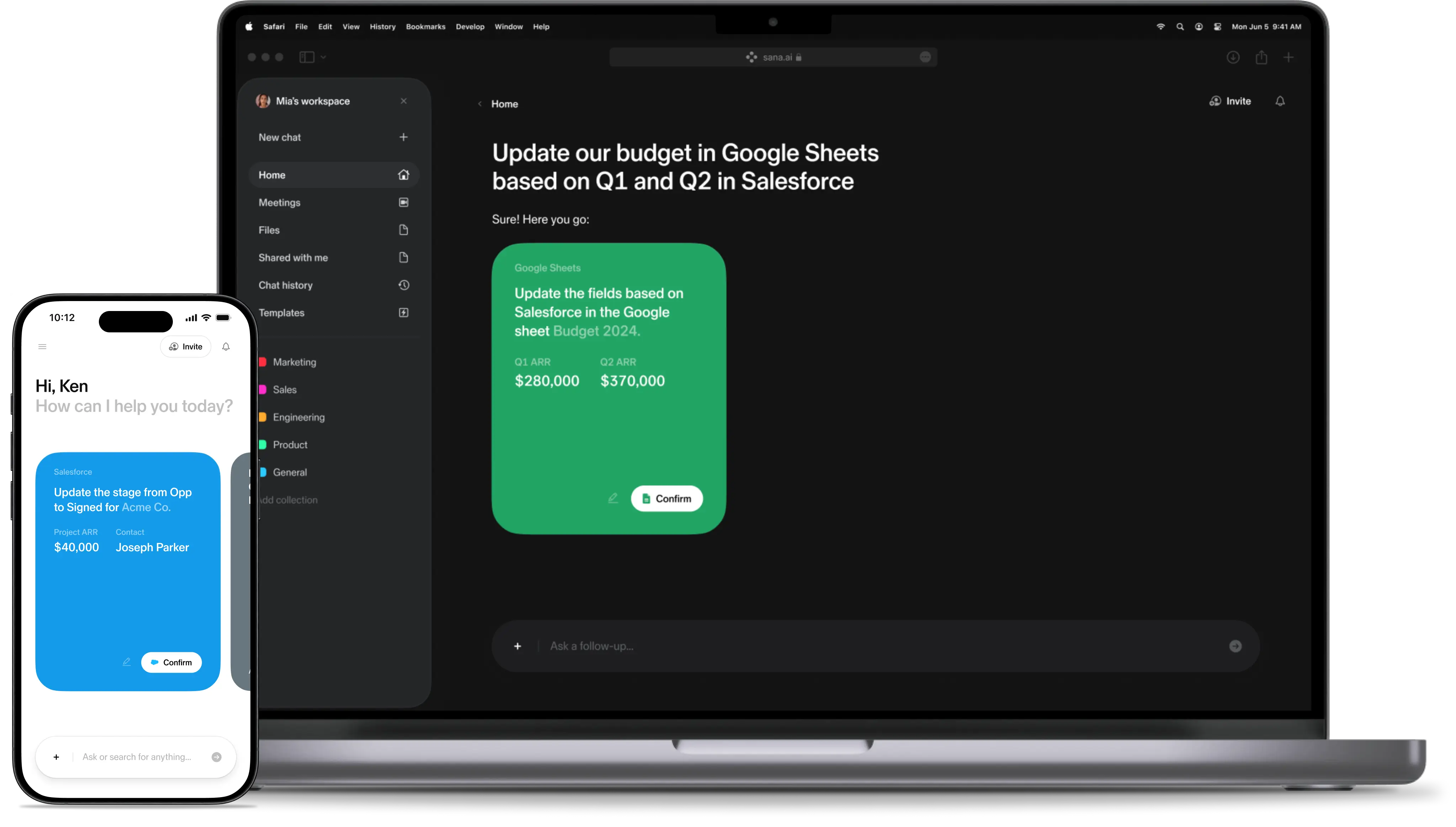The art and science of LMS selection with Filip Lam

Selecting the right learning management system for your company is about finding the partner who shares your vision for learning. But there are hundreds of LMS vendors out there. How do you know who’s going to really partner with you? Who is excited to solve the challenges that your business faces, and create something new?
There’s no better person to answer these questions than Filip Lam, Head of People Growth at Alan. I’ve experienced Filip’s work in action. His commitment to data and user needs, combined with limitless ambition for L&D, leads to future-proof tech decisions. I talked to him about how to find consumer-grade tech for learning, how to use data to make your decisions, and what exactly is partnerability?
Zero in on tech and talent
Rita: You’ve said that it’s just as important to choose a product based on user experience and the talent of the team - why is that?
Filip: There are two main reasons. The first is that we’re all used to amazing tech at home, and have old-school technology at work.
To me, the software we engage with at work should meet the standard we are used to at home. When I look at what’s available today in learning technology, I often find I’m not happy with what’s on offer. I want to know that an LMS provider is providing the best possible software for today, and will continue to keep up with consumer-grade standards in the future.
Secondly, buying a learning solution is a lot like hiring people. When you’re hiring, you have a business need. So you look for a certain profile of a person. You write specific job requirements that you want this person to be responsible for. You consider what is needed for the job now. But you also have to be ready for how this person's job will evolve. So, you look at their personality, their intelligence, and other attributes. You have to bet that each person will be able to tackle problems and uncertainty. You bet on talent.
It’s the same with technology providers. I want to partner with companies who share my values. I want a partner who will complement me in areas that I'm not good at. And then we can work together to build something that will change the industry. You should pick a company who is excited to develop their LMS software to grow and adapt to your future needs.
Customers talk, L&D listens
Rita: At what point in the LMS selection process should you talk with your customers? And by customers, I mean learners.
Filip: I’d flip this around. I use the need for an LMS implementation as an opportunity to solve real business problems. I’ve tied in my project with another team’s ongoing project.
For example, at a previous company, we needed a better way to onboard Engineers. Working with their team meant that, as L&D, we were getting an immediate response from Engineering and from HR on how they found a learning system – did they like the platform? Was it helpful? Was it delightful? Are the LMS features relevant to their work?
Imagine asking someone from HR to respond to my request ‘Hey! Hypothetically, would you find this platform useful for onboarding?’. It’s highly likely that your HR colleagues are already at max capacity. Think about it from their point of view: your request puts the burden of additional work on them; it is a thought experiment that is not integrating into their daily work. It’s not taking their pain away.

Combining real business problems with an LMS pilot shows everyone that L&D is an integral part of the business. To use the example of HR and Engineering: say you have an LMS that you want to demo. Set up an onboarding pathway that HR can use when new Engineers start. That way, you can learn how HR feels about the platform, in addition to trying to make their lives easier. You’re not asking them to add to their workload.
If you work this way, testing the learning platform becomes part of your colleague’s priorities because it addresses problems they are having now. It will be an accurate reflection of learner engagement.
After you’ve made a good shortlist of potential LMS providers, include your customers. Simple as that.
Let data tell the story
Rita: You’re a big believer in making data-driven decisions. Can you tell us about how you test your platforms with your employees, and why that leads to a more reliable choice?
Filip: To select an LMS, you need to know how employees really feel about it. At Alan, we wanted to know if our choice of platform would make a significant difference in user experience. So we ran an A/B test, which involved creating a training course in two different LMS systems. One of them was Sana.
We asked questions such as, ‘If you were to review the tool, what rating would you give it?’, ‘Would you recommend this tool to a friend’, and ‘How intuitive did you find the tool?’ We also asked people if they found the tool to be delightful. Sounds like a strange question, but we want to work with consumer-grade tech that people love.
We also wanted to create a collaborative learning culture. This question allowed our users to tell us which tools they found delightful. If a tool is delightful to use, that’s a big plus when you’re trying to build this new learning culture. And the question showed that one platform was consistently rated higher by course content creators.
We took a different approach with our learners. We didn’t ask them what they thought about the training content. We asked them if they found the training good, and how engaging they found it.
We used the same content, the same pictures, and the same text in both LMSs. And all our learners preferred Sana.
Partnerability – Filip’s secret success tactic
Rita: Okay, so now we know why data matters. Can you tell me more about what partnerability is and why it is so important to you?
Filip: Partnerability means how well an LMS provider will work with my company to solve our problems. It matters because I need to know how important our success is to them, and how much say we can have on their product roadmap.
We’ve agreed that choosing a provider is like hiring a new employee: you bet on talent. It’s the same with a potential provider: how talented are their people? This matters because it affects the speed at which the provider can build amazing products and how quickly they can hire other talented people. This is, in my opinion, directly related to how talented and hard working the team is.
If there is an area where a provider is a little bit lacking – say, for example, their analytics page isn't good enough – ask the provider if they can build it. Building a new integration isn’t the problem, but it’s a lot harder to rebuild a tech stack, or completely change the user experience.

When we see room for improvement, we expect someone to listen to us. For example, at Alan, we need to track hours per person because it’s required from a regulatory perspective. It’s not important to everyone, but that feature would make us legally compliant. We expect our partner to have an honest conversation with us, and that we’re on their roadmap.
Finally, we needed to find a partner who shares our values. At Alan, we are highly focused on customer experience. We need a provider who will continue to optimize their user experience to delight customers. In that way, our mission is supported and shared by our partners, allowing us to live true to our values.
A provider filled with talented people and a shared culture of improvement is a great fit.
Product-led, partnership-driven
Rita: You believe that product-first providers are the best providers. Why is that? And how do you tell if a provider is truly product-focused?
Filip: I believe in product-first companies because they genuinely care about what customers say. If the product isn’t working, they will roll it ‘back’. They want to improve it.
You can tell when a provider is truly product-focused by meeting their product people. Their number one focus is to take note of criticism. Even if they can't do anything about it, they have to know about it because they care. Obviously, everyone in business is invested in securing more sales, but a product-first provider cares about the details. They're interested in that discussion.

Some product people are happy meeting with us; others aren't. Product teams who really care about customer feedback think it's a privilege to talk to a potential customer, or an actual customer. They'll take note of everything.
Don’t leave the roadmap to chance
Rita: Why do you ask to see a vendor’s roadmap when selecting an LMS?
Filip: The roadmap shows me where the company wants to go. As a potential partner, seeing the roadmap provides a better understanding of the vendor’s vision and their values. It'll show you what they have prioritized.
The product will evolve in a way that you cannot predict. To me, it’s important to believe that our company will be aligned with the changes because we believe in the same things right now. So it's natural that they will take the product to a place you also believe in.
It’s about the honest and open conversation I can have with a potential partner. I want to know how we will work together to challenge the industry.
At Sana, when we partner with a company, it’s more than a transaction. We’re betting that this company will challenge us to create something new. Alan is one of those companies. I’m grateful to Filip for his time and insights—they push us and the entire L&D community forward.
Your ABC guide to the LMS
Read article


